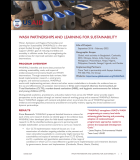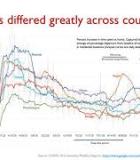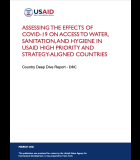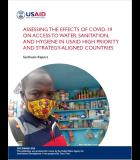Resources to Improved Food Security in Eastern DRC (RISE-DRC)
The RISE program sought to reduce food insecurity among vulnerable families in North Kivu. The program was based on three key strategic objectives:
- Diversified production and increased incomes for small farmers;
- Improved nutritional status of pregnant and nursing mothers and children under 5; and
- Better governance of food security.
Activity Description
The Strategic Objective of diversifying production and increasing incomes for small farmers is structured around new agricultural practices, creating and strengthening value chains, and improving the technical and economic environment. Work on this objective covers eight activities: varietal improvement, livestock rearing, pest and plant disease control (including fighting cassava mosaic disease and Banana Xanthomonos Wilt), storing and processing produce, access to markets, developing agricultural infrastructures, economic information, and agricultural credit.
The Strategic Objective of improving the nutritional status of mothers and children is based on improved access to health services, preventing malnutrition and malnutrition-related diseases, and promoting improved diet and nutrition. More than 10 specific activities serve this objective: training and distributing equipment, disseminating knowledge, prevention messages and improving perceptions, detecting malnutrition, distributing rations, training, supervision and monitoring, behavioral research and information campaigns, promoting parent leaders (male and female) and support groups, distributing rabbits and guinea pigs, promoting vegetable gardens and food diversification, promoting local Corn Soy Blends (CSB), and organizing cookery contests.
The Strategic Objective of improving governance and food security is based on two key themes:
- Cooperation and coordination between actors to improve transparency and accountability, and
- Strengthening links with territorial and provincial structures.
Activities related to these themes include: local development plans and disaster risk reduction plans prepared by committees, conflict mediation, promoting and supporting agricultural and rural committees (with action plans and funding), and implementing specific micro-projects. Defining and implementing local development plans and plans for agricultural committees are key aspects of governance and are essential for sustainable outcomes. These plans also serve as cross-cutting tools that strengthen Strategic Objectives 1 and 2, facilitate coordination between program actors, and promote a long-term vision for reducing food insecurity. Security challenges posed notable difficulties for DFAP implementation.
Expected Outcomes
- Smallholder farming HHs in target areas have increased and diversified production and profit
- Improved nutritional status among pregnant and lactating women and children under 5 in target areas
- Strengthened community governance of food security in target areas





